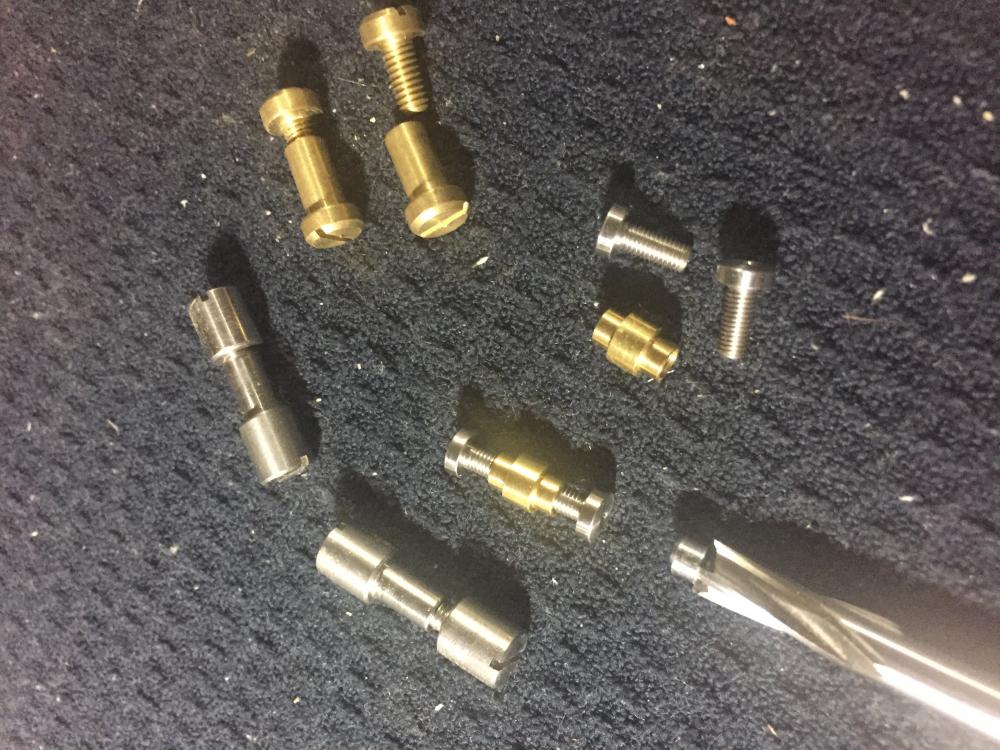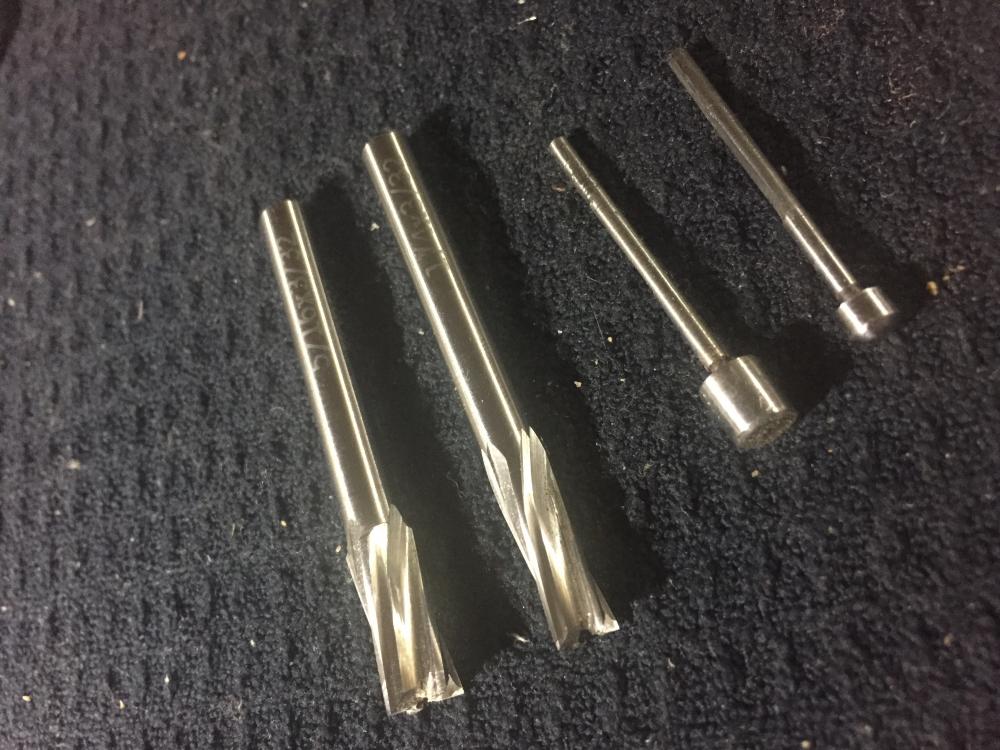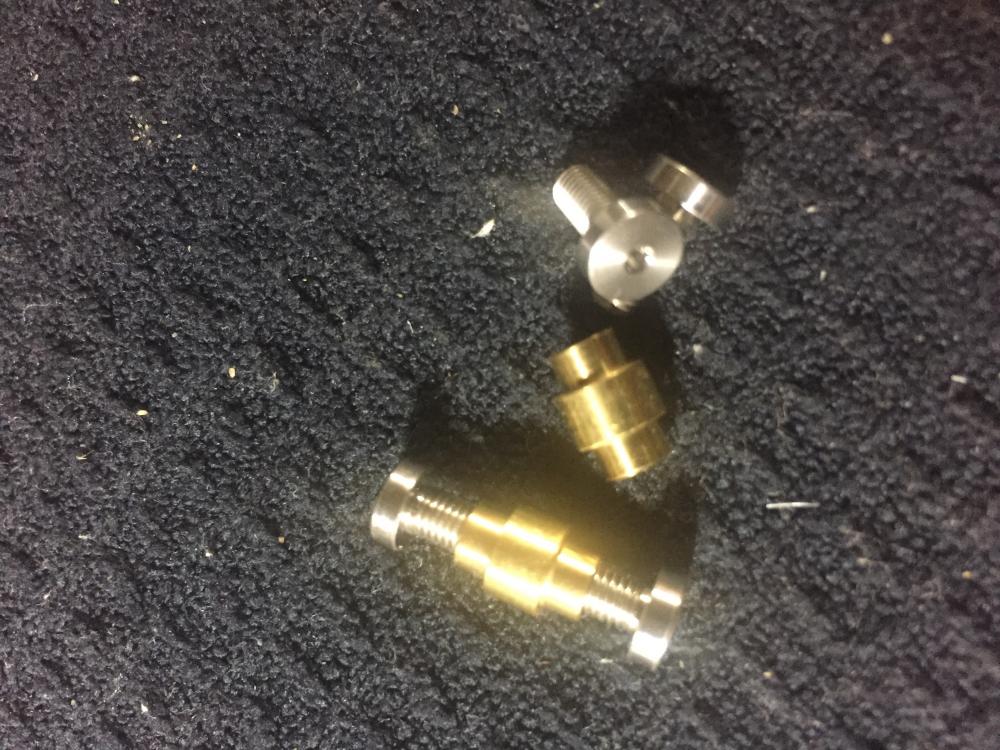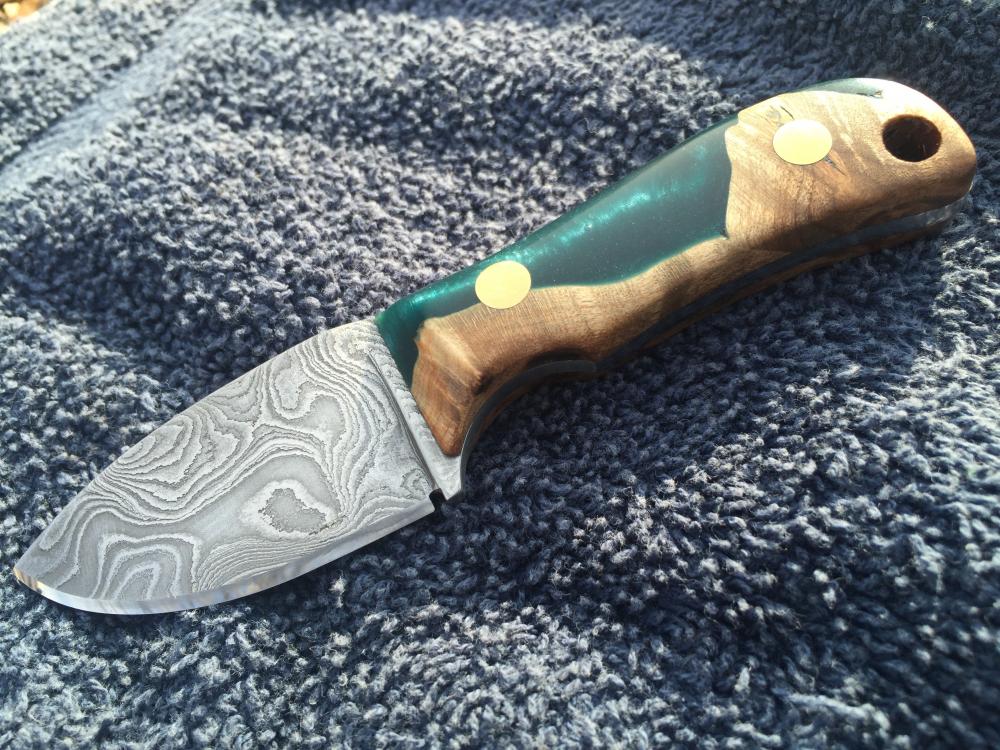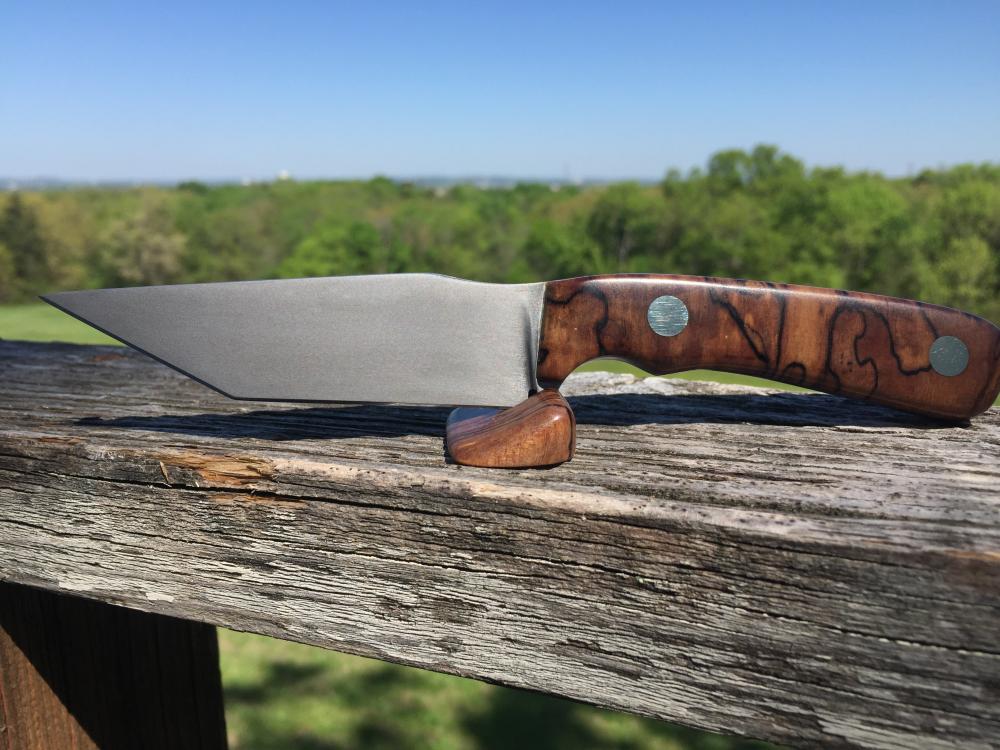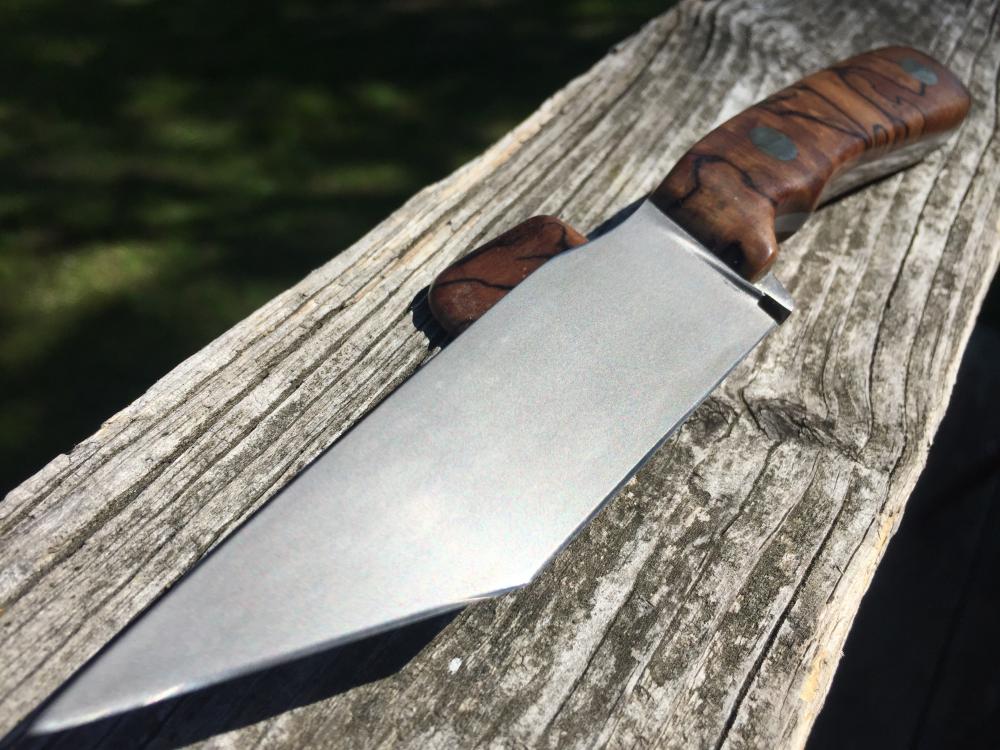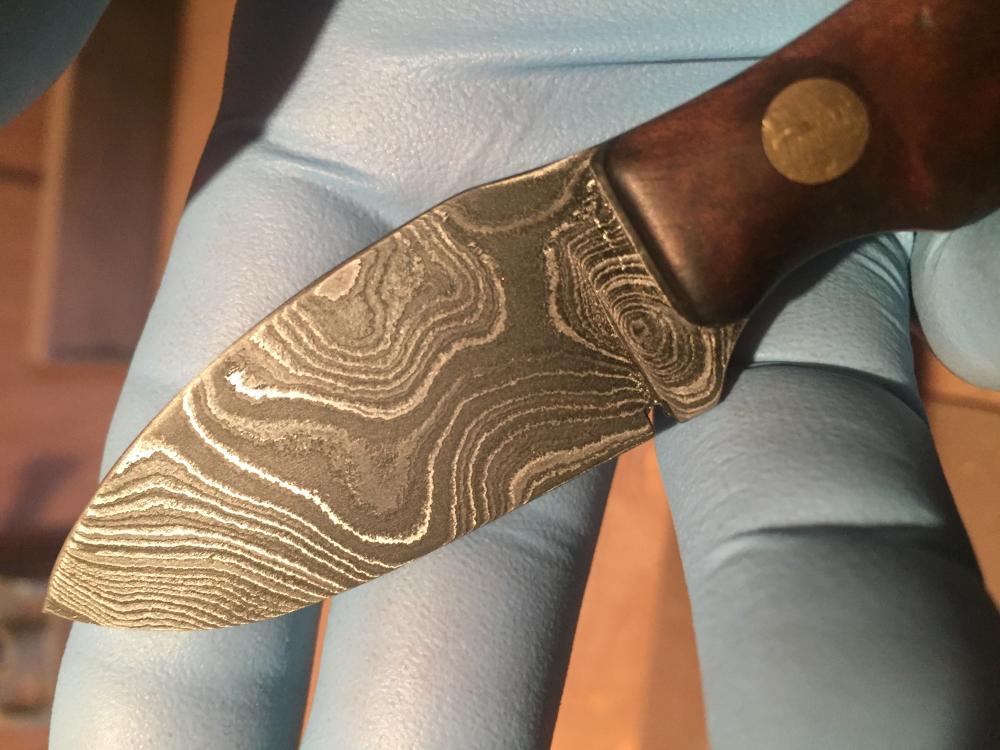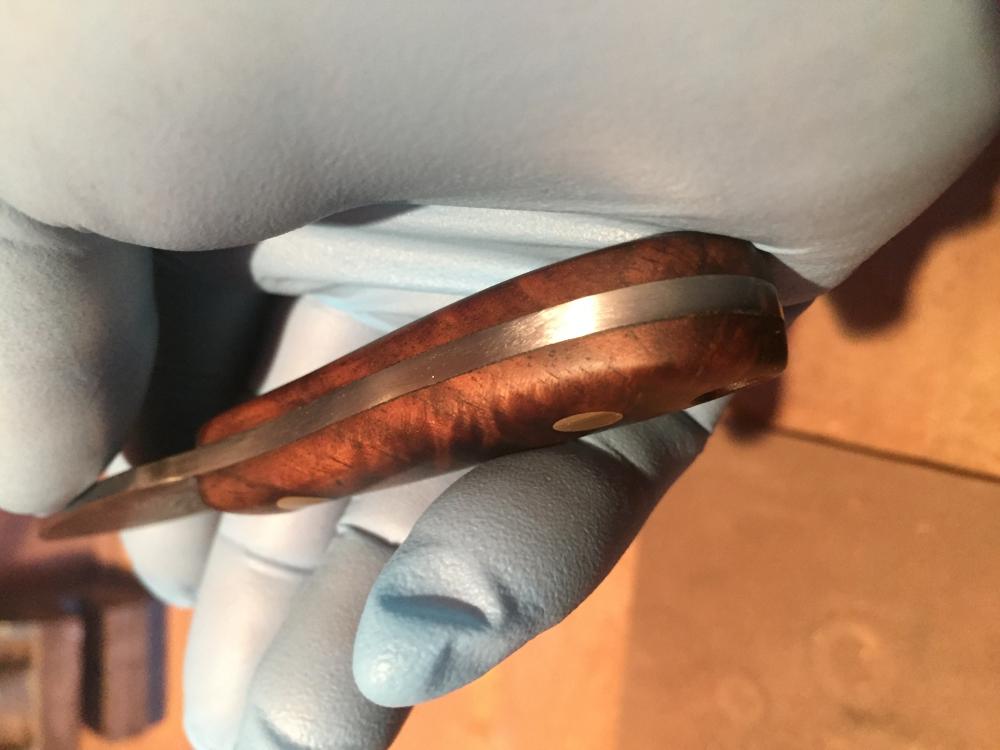
ozarkmountainknives
Members-
Posts
19 -
Joined
-
Last visited
Profile Information
-
Gender
Male
-
Location
Branson Missouri
Recent Profile Visitors
952 profile views
-
TV SHOWS !!!! Just like the early 2000s and the custom bike craze. I was building and servicingbikes then. All it did was make parts, materials, supplies, tools, equipment impossible to find, drive up prices, make custom high dollar bikes impossible to insure. Made people who where established in the business lives miserable. I've been making knives off and on since the 80s, I decided to go back in this business last year, not because of the tv show, but because of the connectivity of this day in age, much easier to market now than back then. Today I went to order supplies, before I could get what I needed from 1 or 2 suppliers. Today I had to order from 6, I spent an equal amount on shipping as I did the items! All this for a TV show I've never even seen. They will be gone soon, but the damage will be done, supplier prices will never go down. The good thing that happened back with the bikes, it made it acceptable, will this happen now too ? Will any good come of this ? Anyone else feeling it ??????
-
Help With Removable Handle Scales
ozarkmountainknives replied to Dustin Quade's topic in Finish and Polish for Knives
That's why I recommended stabilization, he could do it himself or farm it out. attaching to a metal plate is just another point of failure, especially if the material is unstabilized! And not to mention that after counterbore, on a thin scale, there would be less thickness in the wood under the counterbore which is even more a recipe for failure. i don't see how attaching to a metal plate would help in either scenario. Over the years, I've seen more failures on custom made knives from many makers, at the liner. If you really want removable scales, the best material to use would be G10 or some other engineered material, second best would definitely be stabilized. But hey if you like your finished handle an inch and a quarter thick......lol- 10 replies
-
- removable handle scales
- help
-
(and 1 more)
Tagged with:
-
Help With Removable Handle Scales
ozarkmountainknives replied to Dustin Quade's topic in Finish and Polish for Knives
Some makers epoxy them in, I know one maker who presses his in, friction fit. I assemble one scale and fastener, slide the center into the blank, and assemble the other scale and fastener. The hardest part of using a fastener like this is all the holes must align perfectly, or one ends up wonky. All your layout and drilling must be perfect! Also you do not want any slop in the blade blank and female center fastener, or you can end up with scales that misalign and move during use. Many production knifes have removable scales, (Ka-Bar, ESEE, etc.) But they use all CNC and perfect engineering! I have done many removable scales, never had one fail during use, not to say it won't happen with the right gorilla user. Like I said all your drilling must be perfect, I can't tell you how many times I've had to throw away a set of scales and start over due to one misaligned hole. Make sure you quote your customers according for all the extra work, material costs. Also these fasteners come in sizes for Final thickness of scales, so you must have an idea before you order, you can adjust it a bit by grinding the threaded male fasteners, but you must clean the threads perfectly. It can be a pita after grinding to get them to assemble smoothly! Check out Jantz supply, they have the fasteners and step bits, and even some CNC kits that come with blade blanks, fastners, and interchangeable scales. All the hard work is done for you, if you can find a style that fits your customer.- 10 replies
-
- removable handle scales
- help
-
(and 1 more)
Tagged with:
-
Help With Removable Handle Scales
ozarkmountainknives replied to Dustin Quade's topic in Finish and Polish for Knives
Also make sure you get and use the proper step bits and pilots. Corby's are not ment to be removed, heads are extra thick and ment to be ground to final handle thickness.- 10 replies
-
- removable handle scales
- help
-
(and 1 more)
Tagged with:
-
Help With Removable Handle Scales
ozarkmountainknives replied to Dustin Quade's topic in Finish and Polish for Knives
- 10 replies
-
- removable handle scales
- help
-
(and 1 more)
Tagged with:
-
New Knife maker from Ozarks
ozarkmountainknives replied to ozarkmountainknives's topic in Introduce Yourself
The green hybrid and spalted maple handled knives are stabilized with cactus juice. The walnut burl is unstabilized, the walnut knife was made for a friend who takes care of his stuff. The stabilized material won't really accept a finish other than a surface finish such as wax, although I hear makers sometimes do a CA finish, I have not done a CA finish. I hand sand though a progression of grits to 1500, sometimes I will lightly buff after sanding with flannel and Menzerna fine high gloss white compound. After I am done I use a finish / protectant I make myself and generally send a small Baggie of the stuff I make with the knife sale. The finish / protectant I make is beeswax, carnauba wax, and mineral oil. At low temps I melt about 3 parts beeswax to one part carnauba, and add about 3 - 4 times mineral oil to the amount of wax. Stir until cool. What you are looking for after cooling is a soft paste. There is also some similar commercial pastes that you can buy, one I like is called Renaissance Wax. This is a great polish / protectant that can be used on the whole knife, I always have some with me when I'm out in the woods, when I get my knife wet, I use the paste and spread a light coating on the whole knife with my finger and lightly buff off with a dry rag. I've never had a high carbon knife rust after doing this. Also I use this paste when I'm backcountry for chapped lips and skin, and dip cotton balls in it and use for a fire starter! A lot of antique furniture people, and cutting board, toy makers use a similar formula. Hope this helps Les -
New Knife maker from Ozarks
ozarkmountainknives replied to ozarkmountainknives's topic in Introduce Yourself
Oh I still have the taste! The old rotors tend to control what I like to do. I've already been researching home built power hammers, so yep, it would be the way to go. There's really some great billet guys out there nowadays, and of course I'm a firm believer, that a guy who does one thing daily and one thing always, can do a better job than someone who does it occasionally. I agree though, it would be nice to do everything in house! Thanks for the warm welcome! les -
New Knife maker from Ozarks
ozarkmountainknives replied to ozarkmountainknives's topic in Introduce Yourself
Just 10 miles from SDC, don't know many of the local makers, although I've been here 26 yrs. small world! Grinding, handling, and finishing, is my gravy work. lol. -
I'm Les from S.W. Missouri. Back in the late 80s, I managed a tool and equipment rental store, across the street from me there was a blacksmith shop, when it was slow I would grab the cordless phone and go hang out. I learned he was getting ready to retire, but had a lot of work commissioned before he could. One day he asked if after work I could come over and give him a hand in the evenings and he would teach me how to forge Damascus steel, and let me make knives. I never intended to do it for a living, it was just another skill I wanted to learn. Back then I found out it was hard to sell a handcrafted knife. Over the years I would buy billets and grind and handle knives for myself, family, friends, and occasionally make a few extra dollars now and then. Last year after losing a longtime career, I started a sharpening service, I would always keep one of my personal custom knives on me, and everyone would want to buy the one I had, and everyone would ask if I made knives for sale. Over the winter this year I made several and decided to move more into knife making, with today's connectivity, it's much easier to sell. Ive always bought billets and farmed out the heat treating, I don't know if my old body can handle forging any more, so I'll probably stick with buying billets, but I would like to do my own heat treatment. I've been lurking here for a while and this forum has renewed my interests, so I will start small and see what happens. Great forum you have here, and look forward to learning more from the people here! I've added a few pics of some the recent work. Les



